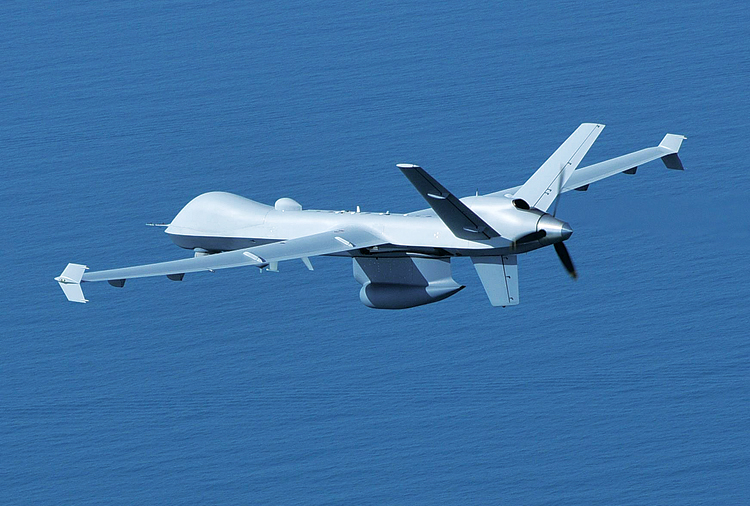INDIAN ARMED FORCES CHIEFS ON OUR RELENTLESS AND FOCUSED PUBLISHING EFFORTS

The insightful articles, inspiring narrations and analytical perspectives presented by the Editorial Team, establish an alluring connect with the reader. My compliments and best wishes to SP Guide Publications.

"Over the past 60 years, the growth of SP Guide Publications has mirrored the rising stature of Indian Navy. Its well-researched and informative magazines on Defence and Aerospace sector have served to shape an educated opinion of our military personnel, policy makers and the public alike. I wish SP's Publication team continued success, fair winds and following seas in all future endeavour!"

Since, its inception in 1964, SP Guide Publications has consistently demonstrated commitment to high-quality journalism in the aerospace and defence sectors, earning a well-deserved reputation as Asia's largest media house in this domain. I wish SP Guide Publications continued success in its pursuit of excellence.
Sea Guardians for India
With the release of RFI for Sea Guardian UAS, India and the United States have initiated business dealing for the very first item listed under the MTCR list

Giving a major fillip to Indo-US defence cooperation, India has begun the process to procure remotely piloted Predator ‘B’ Sea Guardian from the United States (US). During Prime Minister Narendra Modi’s visit to the US in June 2017, an offer to sell the Predator B was made to India.
On December 20, 2017, the Minister of State for Defence, Subhash Bhamre, in response to a question in Lok Sabha, stated, “Request for Information (RFI) for Predator ‘B’ Sea Guardian was issued to the US Office of Defence Cooperation on November 14, 2017 and response is awaited.” Procurement of Sea Guardian is progressed under Buy (Global) category and no transfer of technology is envisaged.
In the joint statement released during the visit of Prime Minister Narendra Modi to US, the two sides said, “US has offered for India’s consideration, the sale of Sea Guardian Unmanned Aerial Systems (UAS), which would enhance India’s capabilities and promote shared security interests.”
Recognising India as a ‘Major Defense Partner’, the statement said, “The US and India look forward to working together on advanced defense equipment and technology at a level commensurate with that of the closest allies and partners of the US.”
With its payload capacity of over 1,700 kg, the Sea Guardian UAS falls under category 1A of the Missile Technology Control Regime (MTCR). Last year India became its 35th member which allows the nation to engage in trade of missiles and drones with range more than 300 km. As per media reports, India is expected to spend $2 billion for 22 of these birds.
The Sea Guardian UAS
As reported earlier in the July 2017 edition of SP’s Aviation, the Sea Guardian UAS manufactured by General Atomics Aeronautical Systems of the US is the naval variant of the Predator B drone which is now known more appropriately by the name MQ-9 Reaper. This is a long-endurance, high-altitude platform that can be employed in armed patrol role. It was the first hunter-killer unmanned aerial vehicle (UAV) that was employed operationally by the US Air Force for the first time as early as in March 2007.
This unmanned platform has also been in service with the armed forces of Australia, Britain, Netherlands and Italy. In comparison with its predecessor, the MQ-1 Predator, the MQ-9 Reaper is larger and more powerful as it is equipped by a 900 horsepower Honeywell TPE 331-10 turboprop engine, as against the 119 horsepower engine on the MQ-1 Predator. Also, the MQ-9 Reaper is capable of flying at an altitude of up to 50,000 feet and can cruise at nearly three times the speed of the MQ-1 Predator.
The engine of the Sea Guardian UAS is integrated with Digital Electronic Engine Control (DEEC) that enhances the performance of the power plant and provides it the capability to prevent wasteful consumption of fuel when operating at lower altitudes.
To increase its surveillance capabilities, India is on a shopping spree for UAVs and in last two decades, has purchased Searcher Mk I and II as also the Heron from Israel Aerospace Industries (IAI). The Indian Navy has been operating UAVs since 2006. In 2015, Israel agreed to sell ten Heron TP armed drones for $400 million to India. Things have not moved since. There were talks of the deal getting final shape during Prime Minister Modi’s visit to Israel in July 2017.
In November last year, the Defence Acquisition Council cleared the proposal to buy 598 mini UAVs, under ‘Buy India’ category of the DPP, for over 1,000 crore. India is also looking for around 100 armed Predator C Avenger unmanned aircraft for the Indian Air Force but it seems this is not cutting much ice with US administration.





